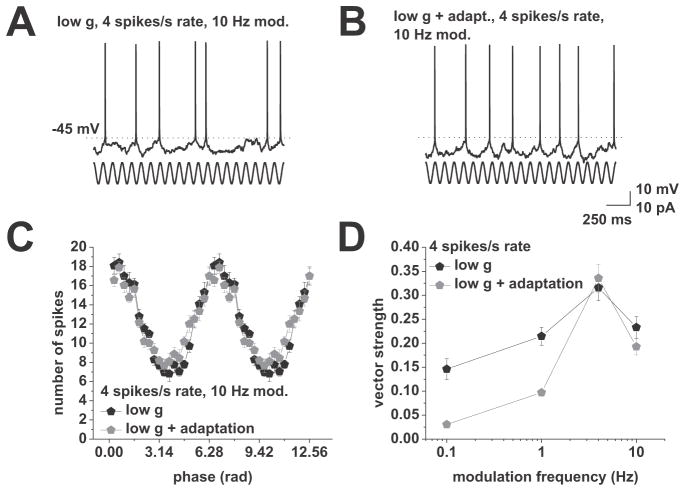Figure 4.
Introduction of an adaptation current selectively reduces action potential phase locking to lower modulation frequencies. A, Response to current-based cosines at average firing rates of 4 spikes/s under low conductance. Sinusoidal modulation at 10 Hz is indicated below the voltage traces. B, Response to current-based cosines at average firing rates of 4 spikes/s under low conductance with addition of an artificial adaptation current. Sinusoidal modulation at 10 Hz is indicated below the voltage traces. C, Average spike-phase histogram in response to 10 Hz modulation at average spike rates of 4 spikes/s. Low conductance is shown in black, low conductance with an additional adaptation current is shown in grey. D, Vector strength vs. modulation frequency under low conductance (black) and low conductance with added adaptation current (grey). conductance at average firing rates of 4 spikes/s. Tested modulation frequencies were: 0.1, 1, 4, and 10 Hz. Note the decreased locking to 0.1 and 1 Hz with added adaptation current.

